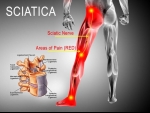Home » Blog
| Stem Cell, PRP, Acupuncture in Queens & Long Island, New York
Blog | Stem Cell, PRP, Acupuncture in Queens & Long Island, New York
Does your back, arm, or leg pain seem to come and go, depending on what you're doing at the moment? This sign may indicate spinal stenosis. Spinal stenosis happens when the bony openings for your spinal nerves (foramen) and/or the spinal cord (central canal) become narrow. This narrowing may compress your spinal cord and/or spinal nerves and can develop at various points along your spine. Spinal stenosis is a condition that's more likely to occur in people over 60 years of age and tends to worsen as the years add up.
Read more
The Implementation of Stem Cells in Neuropathic Pain Therapy - Chronic neuropathic pain (NP) is considered to be on the rise, especially with the increase in diabetes prevalence among the United States population. NP is pain that results subsequently from a lesion or disease affecting the somatosensory system. NP was described to have a prevalence of 3% to 17% of the adult life population. Overall, 20% to 25% of all chronic pain is associated with NP.
Read more
The vicious cycle of chronic pain often leads to isolation and loneliness, which only worsen the situation. Here are some tips to break the cycle and reclaim joy! Chronic pain hurts more than just your physical body. It gnaws at your soul and saps the joy from your heart. It steals so much more than physical comfort. It can take your ability to participate in life. This is the unspoken side of chronic pain. When pain dominates your days and nights, you automatically decline invitations for outings with friends and family.
Read more
Your lower back and hip are codependent structures. A problem in one of these structures can cause dysfunction and pain in the other. If you have chronic lower back pain, the movements in your hip may be reduced and the muscles surrounding your hip joint can become tense and painful. If there’s an abnormality in your hip function, the mechanics of your lower back may be altered, causing pain in both regions. The lower back and hip share many groups of muscles. When a specific muscle is affected, it may lead to compensatory movements, fatigue, and pain in the other surrounding muscles.
Read more
Pain management has always been a challenging issue, which is why it has been a major focus of many rigorous studies. Chronic pain which typically lasts for more than three months is prevalent at an astounding rate of 11% to 19% of the adult population. Pain management techniques have gone through major advances in the last decade with no major improvement in the quality of life in affected populations.
Read more
Knowing these simple breathing techniques can be key in helping you to manage and reduce the effects of persistent pain. To breathe is to be alive, and autonomic bodily function that we hardly pay attention to. It is the first thing we do upon birth and the last thing we do before death. You could say that all life revolves around this simple act. And yet, so many of us are not breathing the way we should, what with the demands and stress in modern society. Many of us take shallow breaths trapped within our chests when directing our breath into our diaphragms is more beneficial for our wellbeing. This accumulates and often leads to aches and pains that go on to become chronic.
Read more
Severe pain in your lower back typically occurs due to a problem in your spine or hip but may also originate from your internal organs. This blog provides a guide to the accompanying symptoms and potential causes of acute, severe lower back pain.
Range of Symptoms That May Accompany Sharp Pain in the Lower Back - Acute pain in your lower back may be limited to one or both sides. You may also feel that the pain originates from a particular spot on the left or right side of your lower back. Sharp lower back pain typically includes one or more of the following symptoms and characteristics...
Read more
When someone is in pain, their whole family is impacted. I was reminded of this truth recently as visitors approached my booth at the Los Angeles Times Festival of Books. I was struck by how many people were stopping by my booth on behalf of somebody in their lives who was having a difficult time with chronic pain. The most memorable was when a brother and sister, probably about 5 and 6 years old, dragged their mom over to talk to me about their grandfather, who was struggling with neck pain.
Read more
To truly understand the dangers of opioids we need to understand what opioids are. Are opioids more dangerous than they are effective? And what are the alternatives? If you’re someone who suffers from chronic pain, it’s likely that you’ve thought of every potential avenue to ease your suffering. But there are a few pain relief avenues that can cause more harm than good, and opioids are one such example. Opioids can be prescribed by a doctor to treat chronic pain caused by a wide array of things like arthritis, fibromyalgia, multiple sclerosis, sports injuries, migraines, and more. They’re highly effective but equally as dangerous.
Read more
The duration of sciatica typically depends on the type and severity of the underlying problem. While sciatica usually resolves within a few weeks, certain medical conditions can cause your symptoms to last up to two years. Read on to learn about the common causes of sciatica, when your symptoms may continue to persist, and common treatments and tips to help prevent your back and leg pain from recurring or flaring.
Read more
Love this Post? Spread the World






















